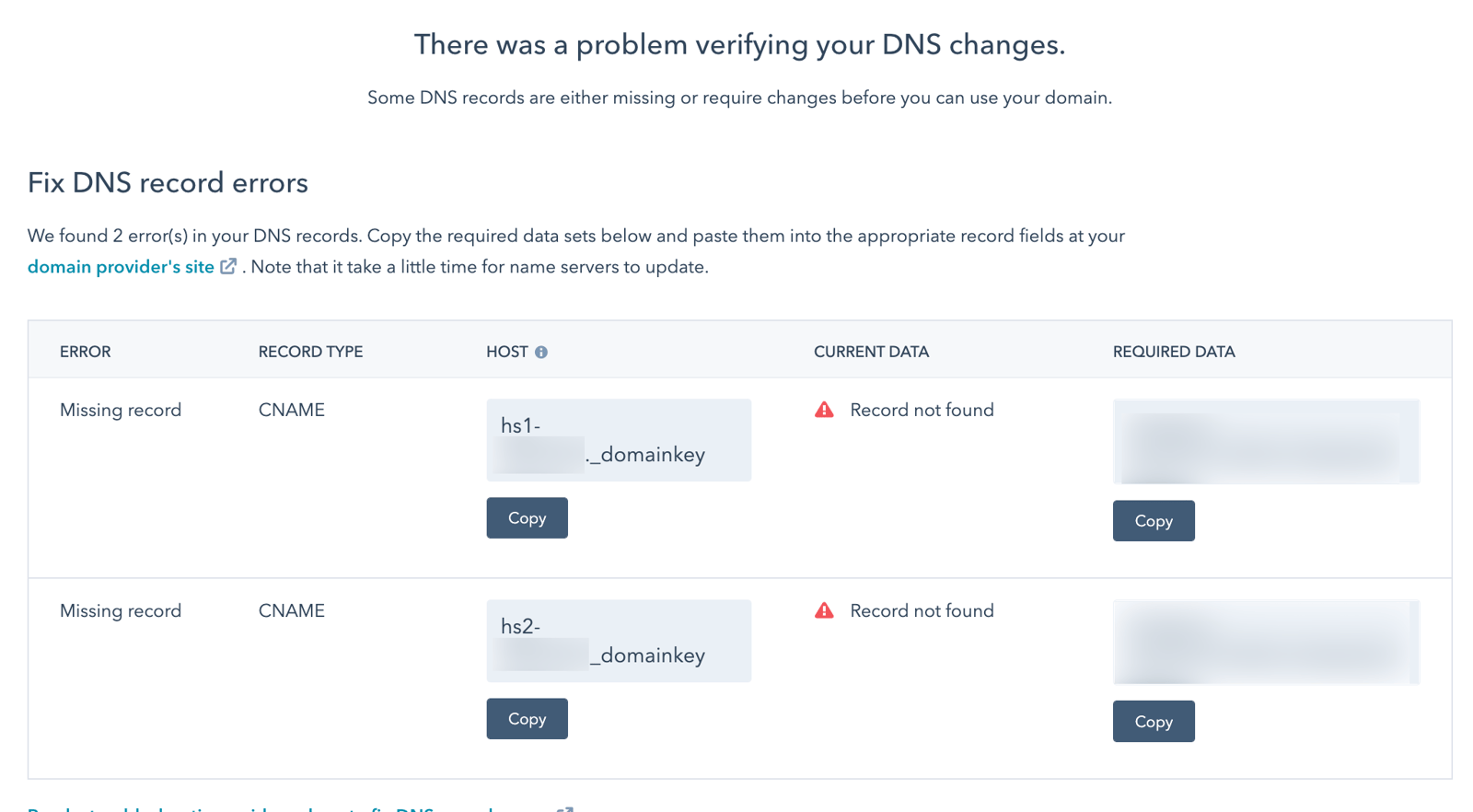HubSpot DKIM Setup
DKIM (DomainKeys Identified Mail) is an email authentication method that uses cryptographic signatures to verify that an email was sent from an authorized source and has not been altered in transit.
This guide provides step-by-step instructions for setting up DKIM authentication for your domain in HubSpot, a popular platform for marketing, sales, and customer service.
HubSpot DKIM Requirements
To connect an email-sending domain:
- In your HubSpot account, click the settings icon in the main navigation bar.
- In the left sidebar menu, navigate to Website > Domains & URLs.
- In the top right, click Connect a domain.
- In the dialog box, select Email Sending, then click Connect.

- On the domain connection screen, enter an email address you use to send marketing emails, then click Next.
- Verify that the email sending domain is correct, then click Next.
- In a separate tab, log in to your DNS provider and locate your DNS record settings.If you’re using Sendmarc for DKIM Management, see the process here.
- Copy the values in the Host and Required Data columns in HubSpot. In your DNS provider account, paste the values into the appropriate record fields for the CNAME record of the subdomain you’re connecting. Once you’ve entered the values into the CNAME record, click Verify.
If there are issues confirming your DNS settings, you’ll see a detailed breakdown of any errors that occurred.
For more context on specific issues, hover over the warning icon in the Current Data column.
How to update your DKIM settings using Sendmarc
To update your DKIM record through Sendmarc, please refer to the Sendmarc DKIM Setup Documentation.
HubSpot’s Documentation
HubSpot’s official DKIM configuration guide can be found here.
Looking for SPF Settings?
Find out how to configure your HubSpot SPF settings here.

